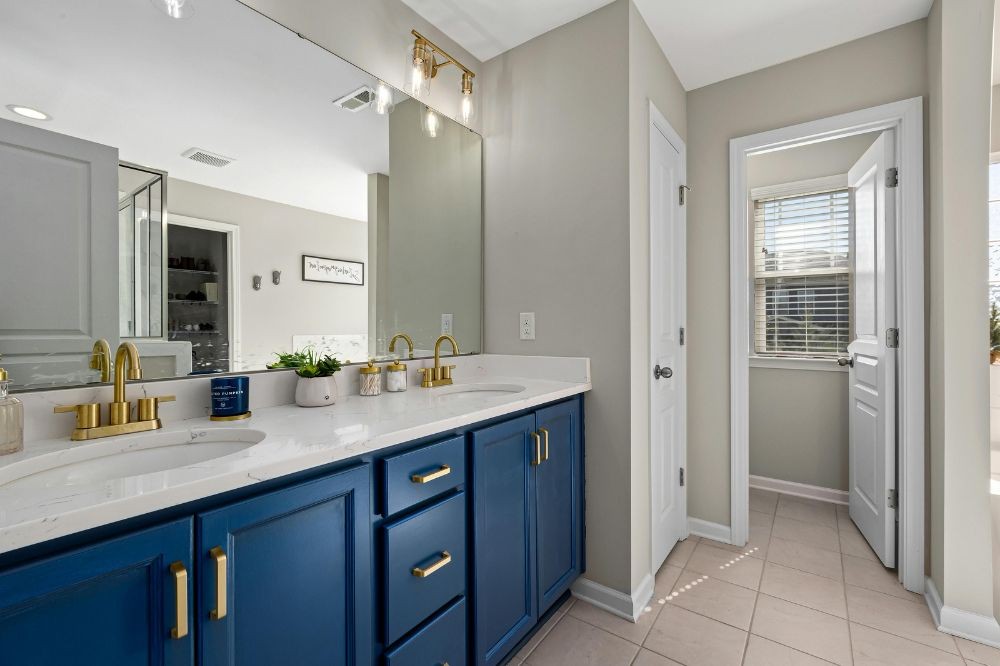Remodeling your home in 2025 isn’t just about upgrading outdated features—it’s about creating a space that reflects your lifestyle, values, and the rapidly changing trends in design and technology. With advancements in energy efficiency, smart home integration, and sustainable materials, homeowners now have more choices than ever when planning a remodel.
Whether you're revamping a single room or undertaking a full-scale transformation, this guide will walk you through everything you need to know to ensure your home remodel is successful, stylish, and future-ready.
Why Remodel in 2025?
The housing market continues to evolve, with many homeowners choosing to remodel instead of moving. A renovation allows you to tailor your home to your needs—without the hassle of buying a new property in a competitive market.
In 2025, the driving forces behind home remodeling include:
-
Remote and hybrid work: More people are upgrading home offices and flexible living spaces.
-
Eco-conscious living: Energy-efficient appliances and sustainable materials are in demand.
-
Smart technology: Automation and AI integration are enhancing comfort and security.
-
Aging in place: Homeowners are future-proofing homes with accessibility in mind.
These factors are influencing remodeling trends across the country, from layout choices to material selections.
Step 1: Define Your Remodeling Goals
Before reaching out to contractors or shopping for materials, clearly outline what you hope to achieve with your remodel.
Consider questions like:
-
Are you remodeling for aesthetics, function, or both?
-
Which areas of your home need the most improvement?
-
Do you plan to sell your home soon, or is this a long-term investment?
-
What’s your maximum budget?
The answers will help you prioritize projects and make smarter design and financial decisions throughout the process.
Step 2: Research 2025 Trends and Materials
This year’s home remodeling trends emphasize both beauty and functionality. Popular design elements in 2025 include:
-
Biophilic design: Incorporating natural elements like wood, stone, and indoor plants.
-
Earthy and warm tones: Terracotta, sage green, and deep browns are making a comeback.
-
Textured surfaces: Plaster walls, ribbed cabinetry, and mixed materials add depth.
-
Energy-efficient systems: From solar panels to induction cooktops and smart thermostats.
If you’re considering kitchen remodeling in Millbrae, for instance, you’ll want to explore features like walk-in pantries, appliance garages, and integrated charging stations—essentials for modern living.
Step 3: Set a Realistic Budget
Your budget should cover:
-
Labor and materials
-
Permits and inspections
-
Appliances and fixtures
-
Furniture and decor
-
A contingency buffer (10–20% for unexpected costs)
Prices can vary based on location, scope of work, and material availability. For larger renovations, getting multiple quotes from reputable contractors will help you stay on track financially.
Step 4: Hire the Right Professionals
Choosing the right team is one of the most critical steps in a successful remodel. Look for licensed, insured, and experienced professionals in your area.
If you’re planning home remodeling in Millbrae, hiring a local contractor familiar with city codes and permitting processes will help streamline your project and avoid costly delays.
Check for:
-
Online reviews and references
-
A clear contract and payment schedule
-
A project timeline with milestones
-
Communication expectations and dispute resolution
Some homeowners also choose to work with a designer or architect for complex projects or custom layouts.
Step 5: Understand the Permit Process
Most major remodeling projects—especially those involving plumbing, electrical, or structural changes—require permits. These regulations ensure your remodel meets safety and zoning standards.
Depending on your city, permit approval can take days or several weeks. Always factor this into your timeline. Skipping permits can result in fines, delays, and problems during resale.
Step 6: Prepare for the Disruption
Even with the best planning, remodeling is a disruptive process. You may experience:
-
Noise and dust
-
Limited access to certain rooms
-
Temporary relocation of furniture or living arrangements
-
Unexpected delays due to inspections or supply chain issues
If your remodel includes essential spaces like kitchens or bathrooms, set up temporary alternatives (like a kitchenette or outdoor shower) to make daily life more manageable.
During a bathroom remodeling Millbrae project, for example, you may need to coordinate schedules if you have limited facilities available during construction.
Step 7: Stay Flexible and Communicative
Things rarely go exactly as planned. Weather, back-ordered materials, or hidden issues behind walls can all impact timelines and budgets. Regular communication with your contractor is key to resolving issues quickly and keeping the project on track.
Check in weekly, ask for updates, and don’t hesitate to raise concerns if something seems off. Transparency and collaboration go a long way in minimizing stress.
Step 8: Finish Strong with Final Inspections and Touch-Ups
As your project nears completion, take the time to do a final walk-through. Create a punch list of any items that need fixing, adjusting, or touching up—these could include paint smudges, squeaky doors, or misaligned fixtures.
Your contractor should address these items before the final payment is made. Once everything is signed off and clean-up is complete, you can enjoy your newly transformed space.
Remodeling Room-by-Room: Quick Insights
While full-home renovations are on the rise, many homeowners remodel in stages. Here's what to expect from popular remodeling areas:
Kitchen
-
Timeline: 6–12 weeks
-
Focus: Layout, cabinetry, lighting, storage
-
Trends: Butler pantries, quartz countertops, matte black fixtures
Bathroom
-
Timeline: 3–6 weeks
-
Focus: Plumbing, tile work, ventilation
-
Trends: Wet rooms, freestanding tubs, floating vanities
Living Areas
-
Timeline: 2–4 weeks
-
Focus: Flooring, lighting, built-in storage
-
Trends: Open-concept layouts, statement ceilings, sustainable materials
Remodeling gradually also gives you time to save, plan, and live comfortably while work progresses.
Final Thoughts
Remodeling your home in 2025 is an opportunity to bring your vision to life, increase property value, and enhance your day-to-day living. With careful planning, the right team, and an understanding of current trends and processes, you can avoid common pitfalls and enjoy the journey.
Whether you're planning a full renovation or focusing on kitchen remodeling in Millbrae, treat the process as both an investment and a creative adventure. Don’t be afraid to mix functionality with personal flair—and always plan for a bit more time and budget than you think you’ll need.













